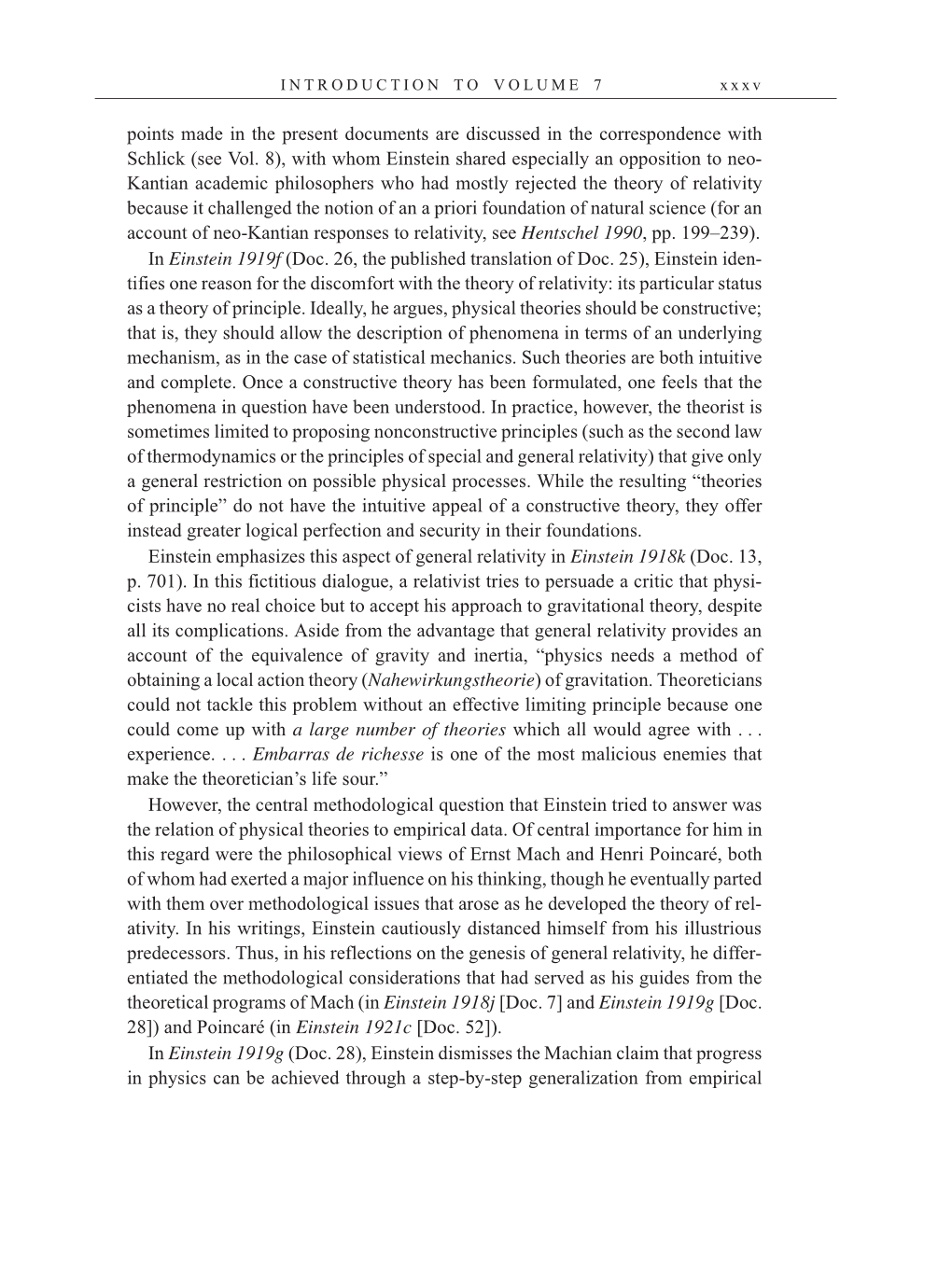I N T R O D U C T I O N T O V O L U M E 7 x x x v
points made in the present documents are discussed in the correspondence with
Schlick (see Vol. 8), with whom Einstein shared especially an opposition to neo-
Kantian academic philosophers who had mostly rejected the theory of relativity
because it challenged the notion of an a priori foundation of natural science (for an
account of neo-Kantian responses to relativity, see Hentschel 1990, pp. 199–239).
In Einstein 1919f (Doc. 26, the published translation of Doc. 25), Einstein iden-
tifies one reason for the discomfort with the theory of relativity: its particular status
as a theory of principle. Ideally, he argues, physical theories should be constructive;
that is, they should allow the description of phenomena in terms of an underlying
mechanism, as in the case of statistical mechanics. Such theories are both intuitive
and complete. Once a constructive theory has been formulated, one feels that the
phenomena in question have been understood. In practice, however, the theorist is
sometimes limited to proposing nonconstructive principles (such as the second law
of thermodynamics or the principles of special and general relativity) that give only
a general restriction on possible physical processes. While the resulting “theories
of principle” do not have the intuitive appeal of a constructive theory, they offer
instead greater logical perfection and security in their foundations.
Einstein emphasizes this aspect of general relativity in Einstein 1918k (Doc. 13,
p. 701). In this fictitious dialogue, a relativist tries to persuade a critic that physi-
cists have no real choice but to accept his approach to gravitational theory, despite
all its complications. Aside from the advantage that general relativity provides an
account of the equivalence of gravity and inertia, “physics needs a method of
obtaining a local action theory (Nahewirkungstheorie) of gravitation. Theoreticians
could not tackle this problem without an effective limiting principle because one
could come up with a large number of theories which all would agree with . . .
experience. . . . Embarras de richesse is one of the most malicious enemies that
make the theoretician’s life sour.”
However, the central methodological question that Einstein tried to answer was
the relation of physical theories to empirical data. Of central importance for him in
this regard were the philosophical views of Ernst Mach and Henri Poincaré, both
of whom had exerted a major influence on his thinking, though he eventually parted
with them over methodological issues that arose as he developed the theory of rel-
ativity. In his writings, Einstein cautiously distanced himself from his illustrious
predecessors. Thus, in his reflections on the genesis of general relativity, he differ-
entiated the methodological considerations that had served as his guides from the
theoretical programs of Mach (in Einstein 1918j [Doc. 7] and Einstein 1919g [Doc.
28]) and Poincaré (in Einstein 1921c [Doc. 52]).
In Einstein 1919g (Doc. 28), Einstein dismisses the Machian claim that progress
in physics can be achieved through a step-by-step generalization from empirical
